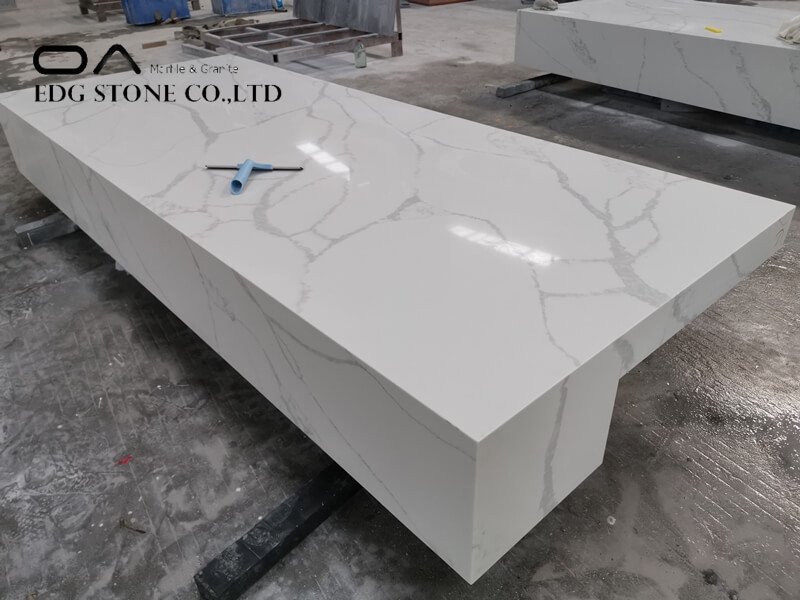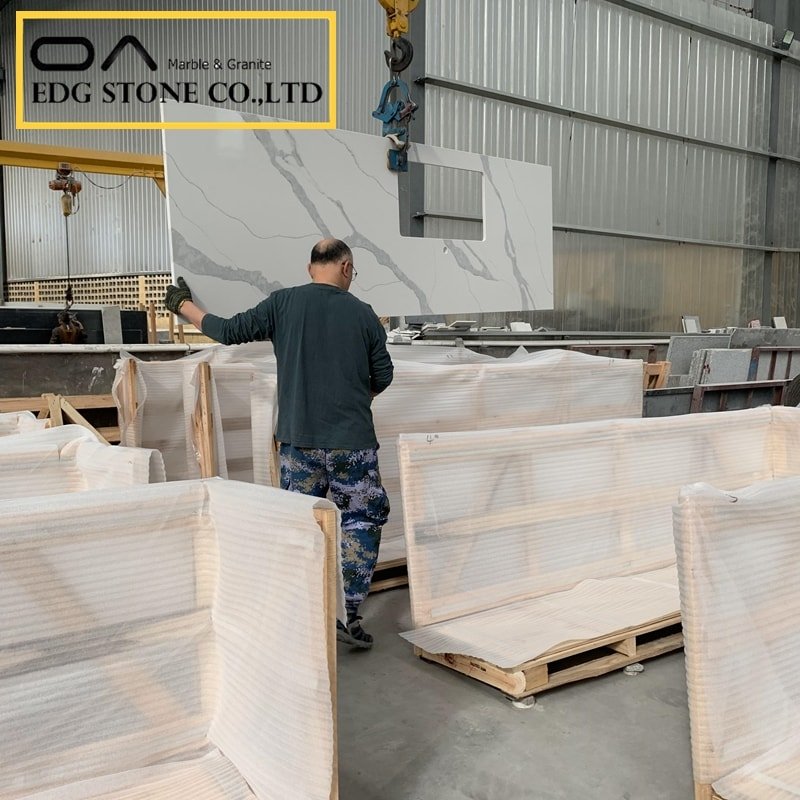Quartz stone processing requires the processing requirements of quartz stone, in principle, it is the same as the processing of natural stone, and it is the same as natural granite and granite. It is best for the operator processing quartz stone to have experience in processing natural stone, and to process general artificial stone However, operators who have no experience in processing natural stone must in principle be trained before they can take up the job.
1. Common processing tools:
Essential tools: Multifunctional marble cutting machine (cutting material, grinding, and chamfering)
2. Grinding machine (with special diamond grinding disc and resin grinding disc)
3. Cantilever water mill polishing machine
4. Hand drill (with diamond set drill R15-R45 mm)
5. Special materials such as curve data, small blades, triangular glass fixtures, wiring sockets, etc.
(1) Marble glue (white, transparent)
(2) Special glue for quartz stone (prepared in factory)
(3) Special dry glue for quartz stone (factory preparation)
(4) Curing agent
2. According to the characteristics of diamond, the recommended table top shape is as shown in the figure below: Rear water retaining edge shape: small arc R4-8 MM Rear water retaining and tabletop are at right angles Front skirt: small circular arc R2—4 MM
Quartz stone countertop processing edge type refers to “2008 Oupai Cabinet Technical Manual Countertop Edge Type” page 28
3. On-site measurement and drawing of the processing process flow chart and recording the size → confirm the design and edge type of the table with the customer → draw and draw the line according to the drawing → cut the material with a marble machine → use a multi-function marble machine or another special water grinder to trim the edges Type → Blow dry and clean the glue water → adjust the glue and apply the adhesive surface → clamp with a special fixture → use a blade to remove the waste glue after curing with a special grinding and polishing machine water grinding → polishing → check the effect of the size. The back is enhanced
4. Hard diamond grinding pads for edge grinding and chamfering, first 50#, then 150#, then 300#; when polishing, start with 500# water grinding pads, and then use 1000#, 2000#, 3000# water grinding pads, in turn, Polish the diamond pads. Note that the diamond abrasive pads must be hard, and must be emphasized with the supplier. The size of the abrasive pads can be 3 inches or 4 inches, which can be determined according to the needs of the use.
5. The connection must be connected with a 45-degree oblique port
6. For cutting, you must use a hard diamond saw blade with high hardness and large sales volume. When cutting under water cooling, the speed of the saw blade during cutting must be 6000 rpm or more. The saw blade with insufficient emery content is due to cutting sales. Insufficient, it will cause the quartz stone plate to be cracked by high-speed impact, and this type of saw blade is not durable. The high-hardness diamond saw blade used must have a sand outlet or a sand hole to prevent the quartz stone from being discharged in time and causing local Heat to the point that the quartz stone slab cracks during processing.
7. Open the furnace hole
1. Determine the center position of the basin hole according to the design requirements, and the distance between the edge of the furnace hole and the rear water retaining edge is not less than 70mm;
2. When opening the furnace hole, you must first drill holes at the four corners of the furnace hole (the drill bit for the hole must be a high-hardness diamond drill bit, which is available in Yunfu’s stone processing tool supply store), and then use a wire cutting machine to cut slowly and evenly. When cutting, the plate cannot be cut through at one time. It should be cut in two steps. The first step is to cut 1/3 of the thickness of the plate, and the second step is to cut the plate through to prevent the plate from cracking.
3. When opening the furnace hole, there must be a backing plate at the bottom of the quartz stone plate, which cannot be completely suspended, and the bearing force must be uniform to prevent cracking during the opening process due to uneven force.
4. After the furnace hole is cut into a square, use an angle grinder to grind the four corners of the furnace hole into a circular arc angle, the arc radius is not less than R10mm, and the back of the four corners of the furnace hole are thickened with a small plate of about 120×120mm, and then the angle grinder is used to grind it. Form a corresponding arc, and thicken the four sides with a quartz stone plate with a width of more than 30mm.
8. Glue that can be used when bonding quartz stone The glue that can be used when bonding quartz stone is the same as the bonding glue used for natural stone.
(1) Marble glue. It is available in Yunfu, the most commonly used, and the specific use must be carried out in accordance with the requirements in the instruction manual.
(2) Special glue for quartz stone. It is prepared by the quartz stone factory. When using, it must be ensured that the barge connection is water-free, dry, oil-free, and wax-free. If you are not sure, wipe it with acetone or thinner water, and cool it. The bonding work can only be carried out after drying. The connection port of the quartz stone is best to be connected with a 45-degree oblique port, and the connection port must be ground. This glue can be cured within 15 minutes, but the real curing is After a week, a month later, it can be completely anastomosed (mosaic) with the quartz stone.
(3) Special dry glue for quartz stone. Prepared by the quartz stone factory, the use is the same as the special glue for quartz stone, but the difference between dry and wet is different.
(4) Epoxy AB-type dry hanging glue. It can be used according to the instructions during use. In short, the processing technology of quartz stone is the same as the processing technology of natural stone, and the processing methods and tools are the same as those of natural stone. The processing technology of the stone is transplanted to the quartz stone.









